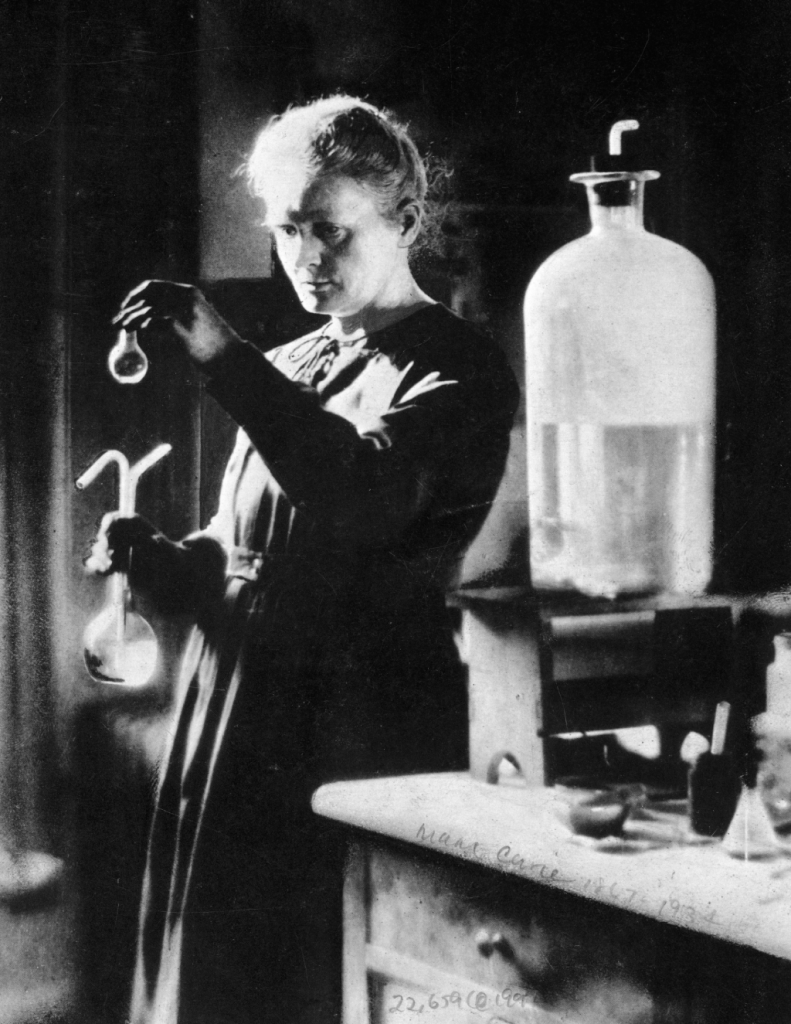AI Inference at the Edge: A lesson from Marie Curie
In 1914, Marie Curie’s work on radium stopped in its tracks as the reality of World War I approached. Undaunted, Curie sent her entire stock of radium to a local bank by train and embarked on a new project – using her knowledge of radiology to save soldiers’ lives.
The problem Curie identified was that wounded troops needed the latest X-ray technology to quickly diagnose broken bones and find shrapnel such as bullets. But all of the X-ray machines were in hospitals, in large cities. This presented a major obstacle for fast diagnosis, decision making and lifesaving action to be taken.
Curie set to work and invented the world’s first radiological car. Affectionately known as the ‘Little Curie’ this was quite literally a car containing an X-ray machine and image processing equipment and an electrical generator to power the machines. Female volunteers were trained up to operate the equipment, which was replicated in 20 vehicles procured from Curie’s friends in Paris, and drive the vehicles into the heart of the battlefields. This innovation, combined with 200 radiological rooms built at fixed locations close by to the battlefields, enabled over one million soldiers to have potentially life-saving, fast X-ray diagnostics on-site.
The impact of this invention on human lives and the outcome of the war cannot be understated. Yet Curie did not invent the X-ray machine, or the dynamo, or the car, or the dark room. She simply took existing technologies and applied them to create a very early example of ‘inference at the Edge’.
100 years later, a project was delivered in Ghana following almost the same logic, but this time with a key difference: as a global society, we now have the ability to compute at the Edge, providing unprecedented opportunities for improved healthcare. To replace the cumbersome, costly diagnostic process for detecting tuberculosis (TB), the Ghanaian government approved a project to install 52 X-ray units across the country, including mobile and semi-mobile clinics allowing healthcare workers to reach at-risk populations in the most remote parts of the country. These units contained Computer Aided Detection for TB (CAD4TB) and teleradiology technologies, allowing for much faster and cheaper diagnostics. These advances in screening have made a huge impact, building on Marie Curie’s original inference at the edge invention – but there is still huge scope for improvement, by adding Artificial Intelligence (AI) into the mix.
In the future, AI based systems at the edge are going to disrupt the way we use technology in almost every industry. Instead of simply applying computing at the edge to speed up a process, AI inferencing hardware will bring smarter, faster decision making to the mass market.

Democratisation of these technologies will mean any company will be able to massively increase the power and potential of their products and services. This new generation of AI technology not only brings insights to the edge, but also allows data to be processed and analysed automatically while being stored in a cloud.
There are myriad potentially game-changing use cases across healthcare, manufacturing, robotics, public transport and security, analysing multiple data types including image, audio and inertial or environmental sensors.
In healthcare, opportunities Marie Curie could only have dreamed about are surfacing all the time. Diagnostics will come with the power of decision making through sensor technology – audio, visual and otherwise. Medical imaging companies will need the hardware to be able to process the amount of data required in order to make this faster and more reliable. The opportunity to be able to diagnose at the edge using AI inferencing is here, and it is scalable. This technology is also enabling smart and secure access to medical records using biometric encryption, for example on ID cards. Inferencing allows diagnostic equipment to utilise medical records very quickly, without compromising on security. Individuals will be able to have much greater confidence that only the right people have seen their medical records and test results. This could also lead to greater automation of medical administration overall, saving valuable budget that can be repurposed to save more lives. Consumers will also be empowered to monitor their own key health metrics using wearable technology fitted with AI inference hardware.
Across other industries, sensor technology will be applied to technologies such as robotics for safer and more dynamic uses. Surveillance cameras will be able to provide more protection for businesses and vulnerable people in their own homes. Public transport networks as well as shipping and freight will benefit from more automation and faster, more accurate decisions.
It would have been fascinating to see what Marie Curie would have made of these innovations, and how she might have applied them to further her agenda to make the world a healthier and safer place in which to live. Avnet Embedded is at the heart of the edge computing explosion. Our capabilities across embedded computing at the edge, sensor technology, wireless transmission and storage allow us to provide value to customers whether they are just starting out in edge computing or are ready to apply AI to an existing use case today. Whatever stage your business is at, we can engineer and integrate a solution that is right for you and your target audience.